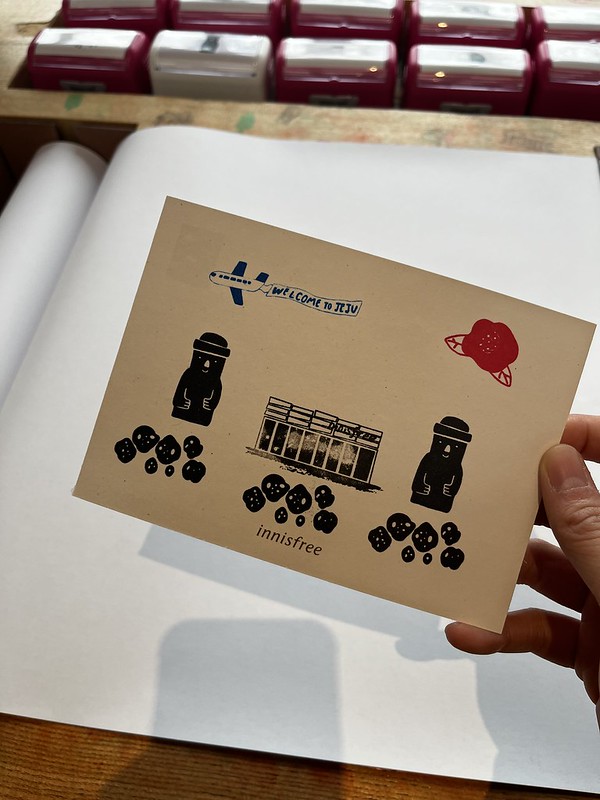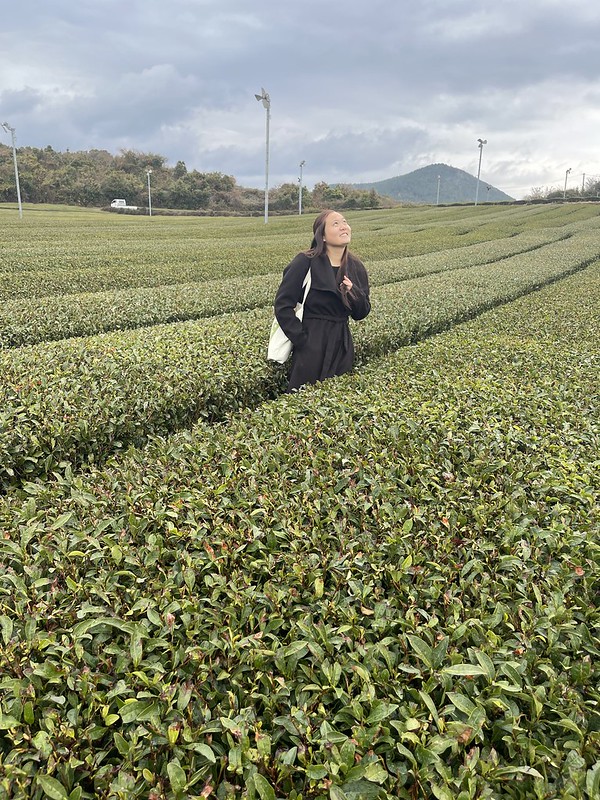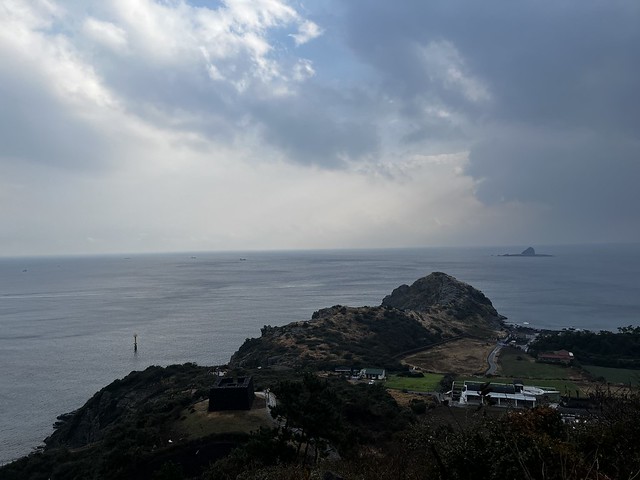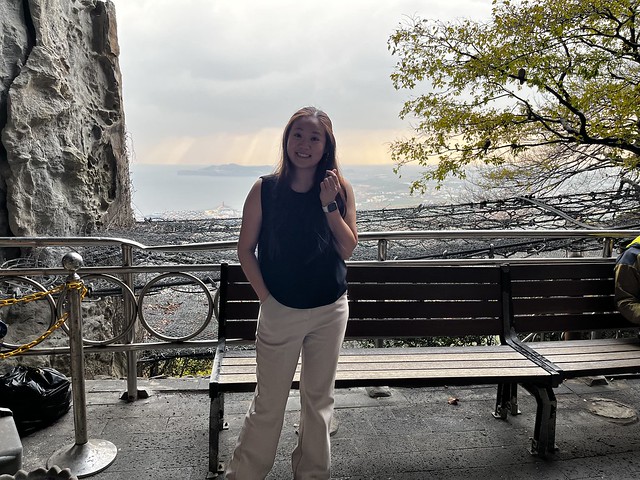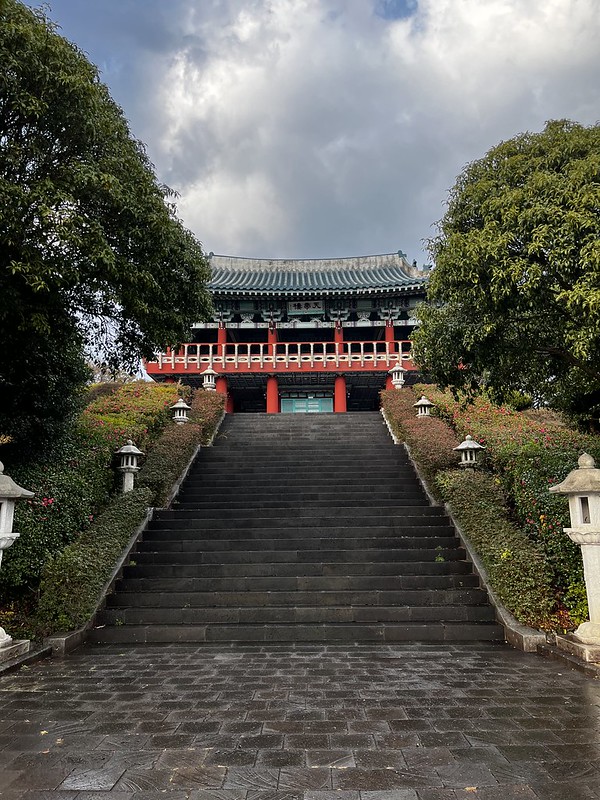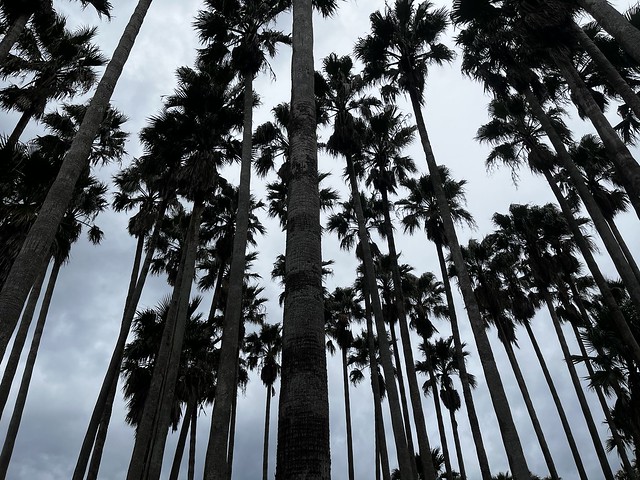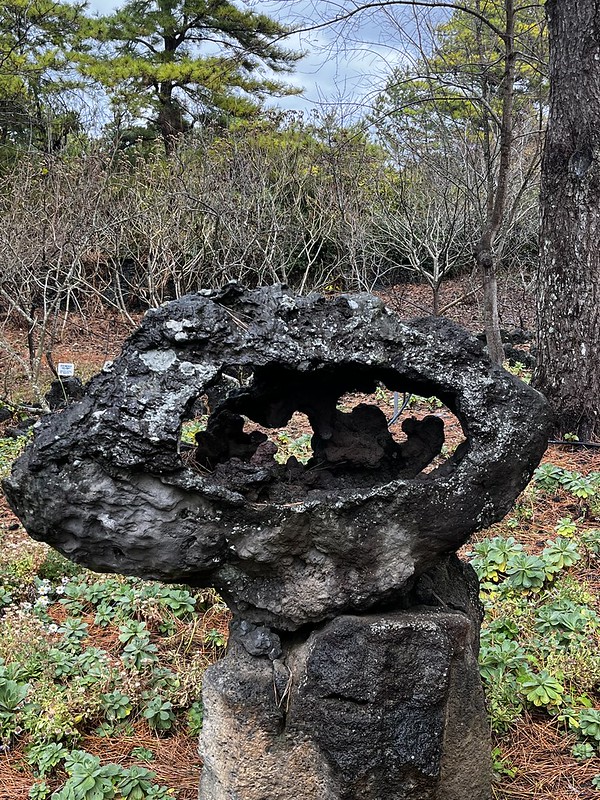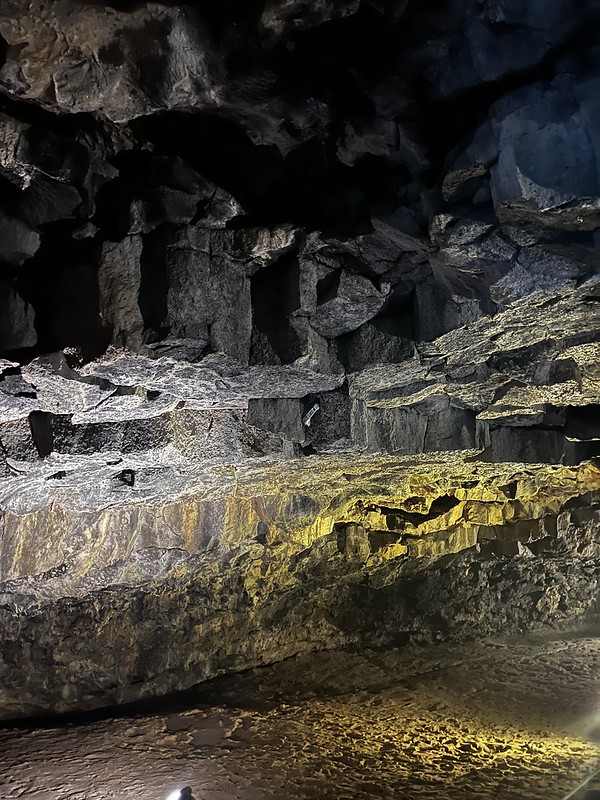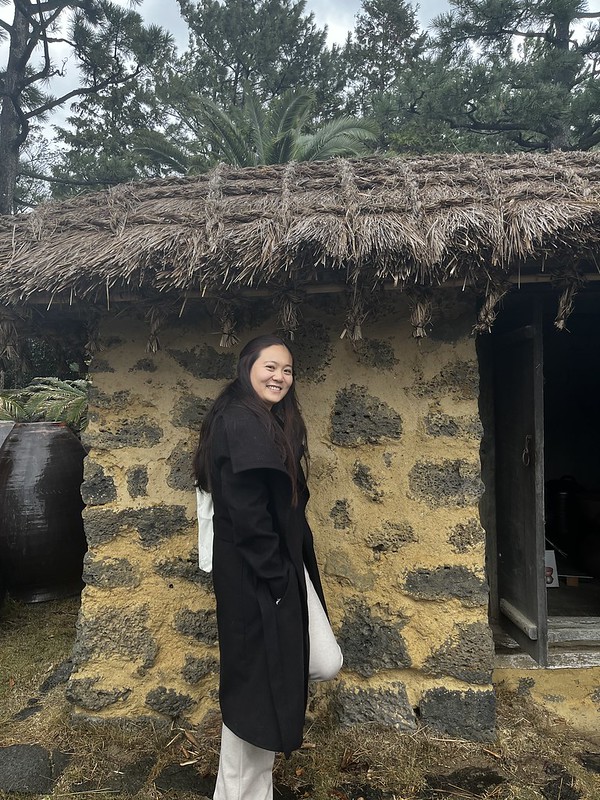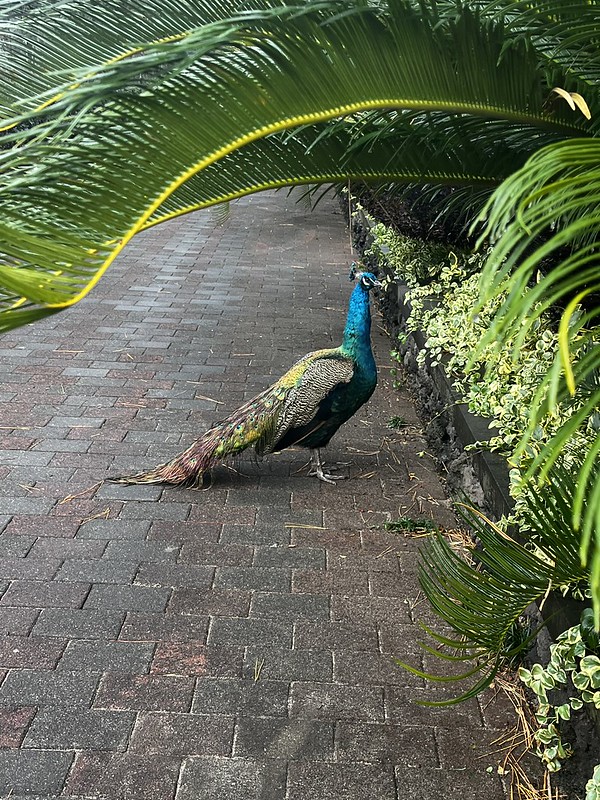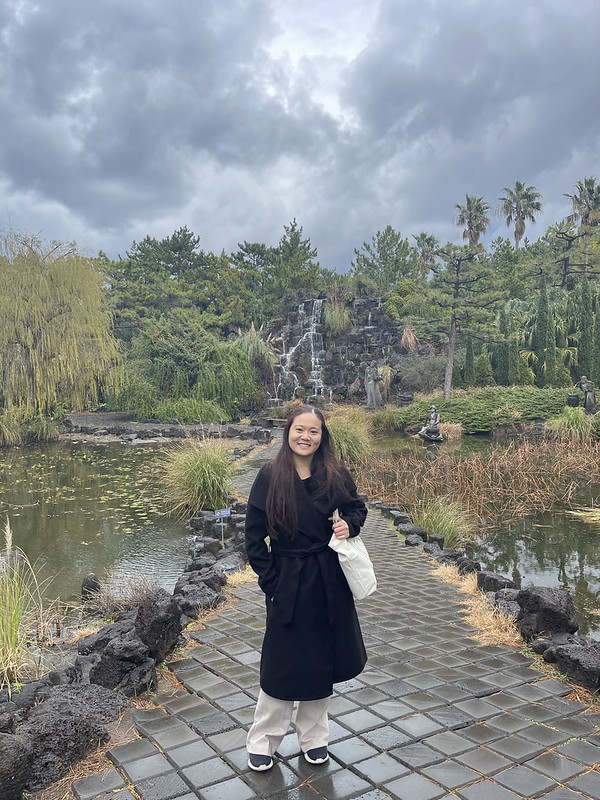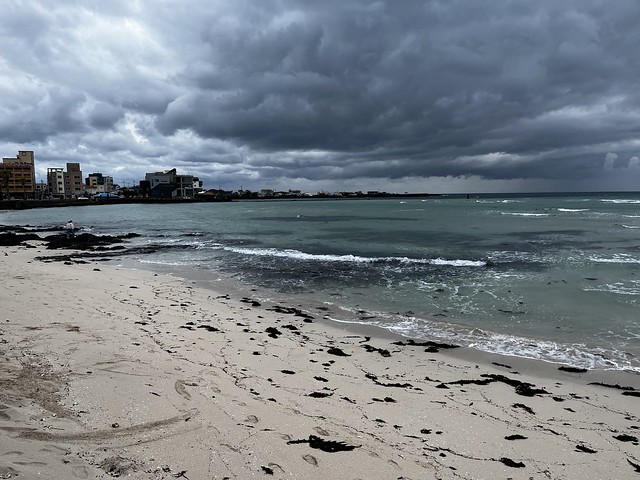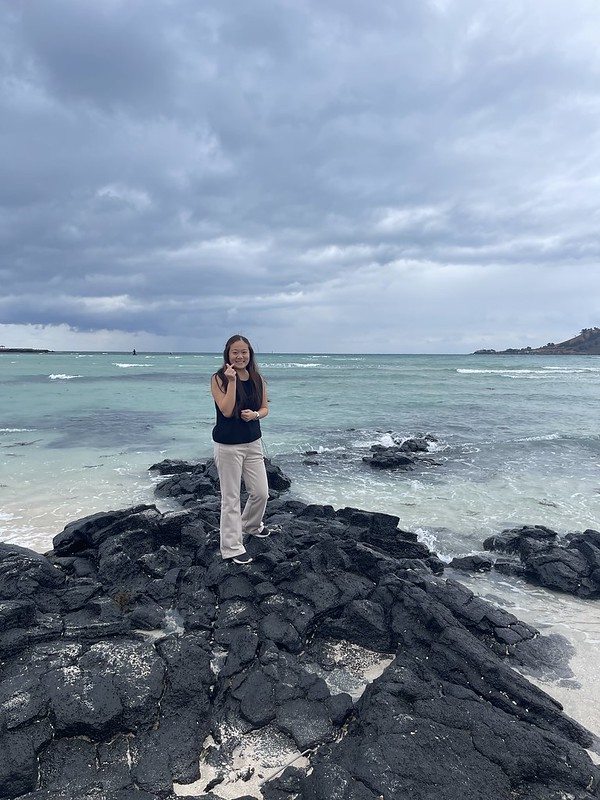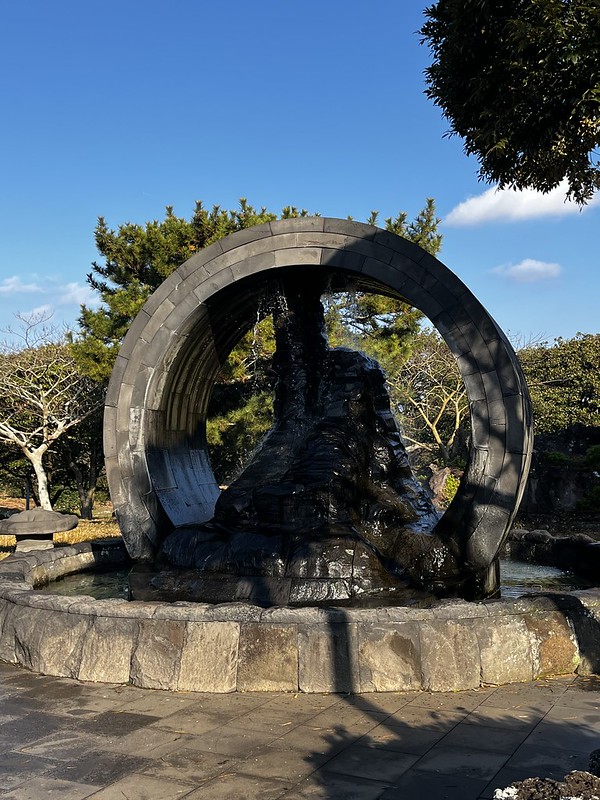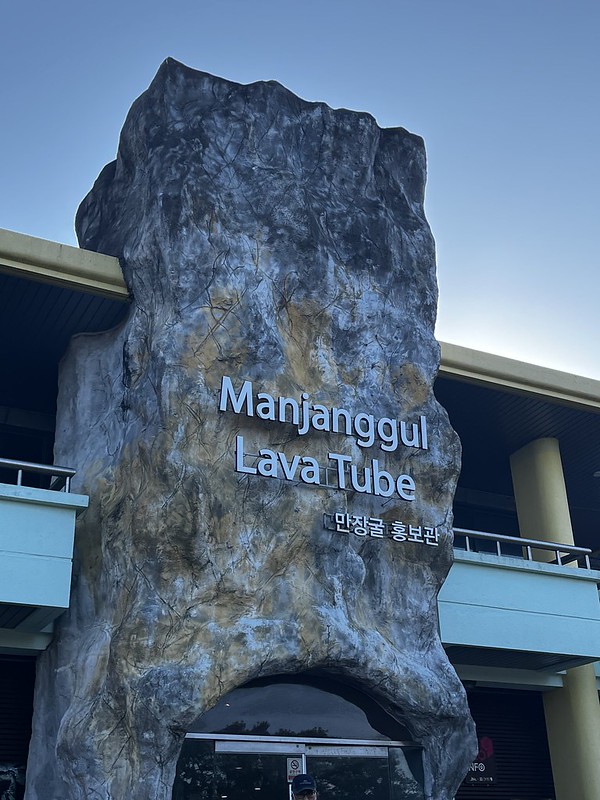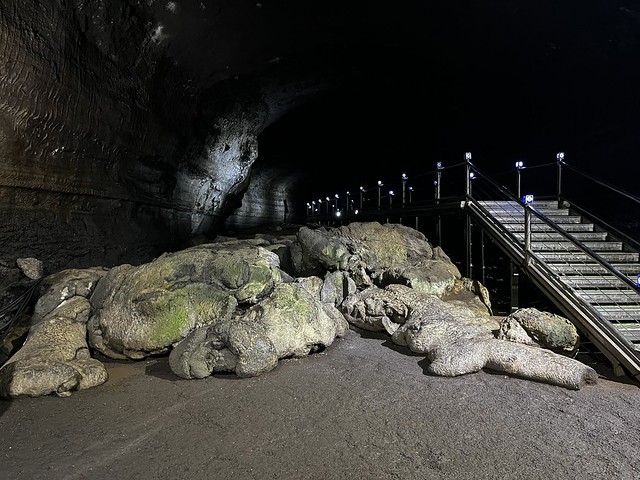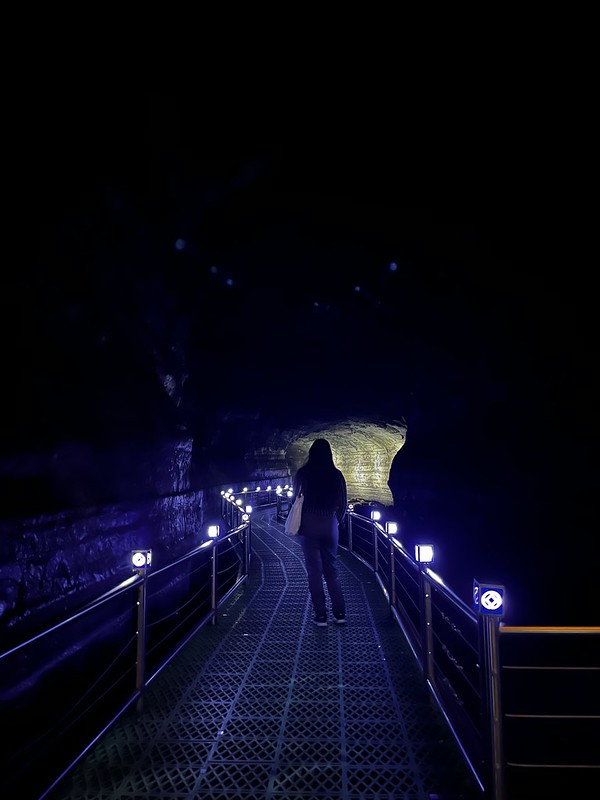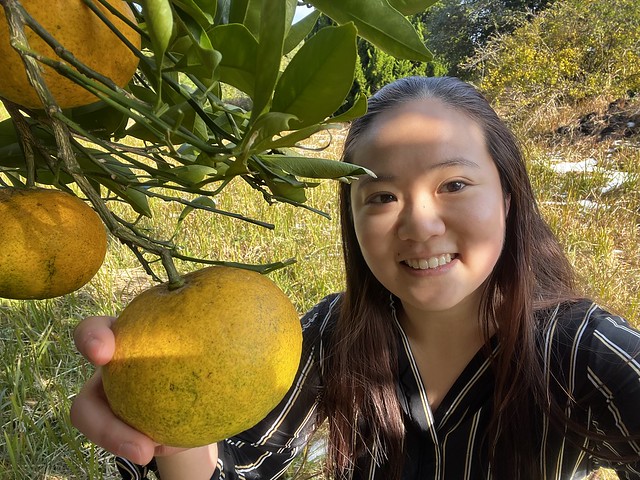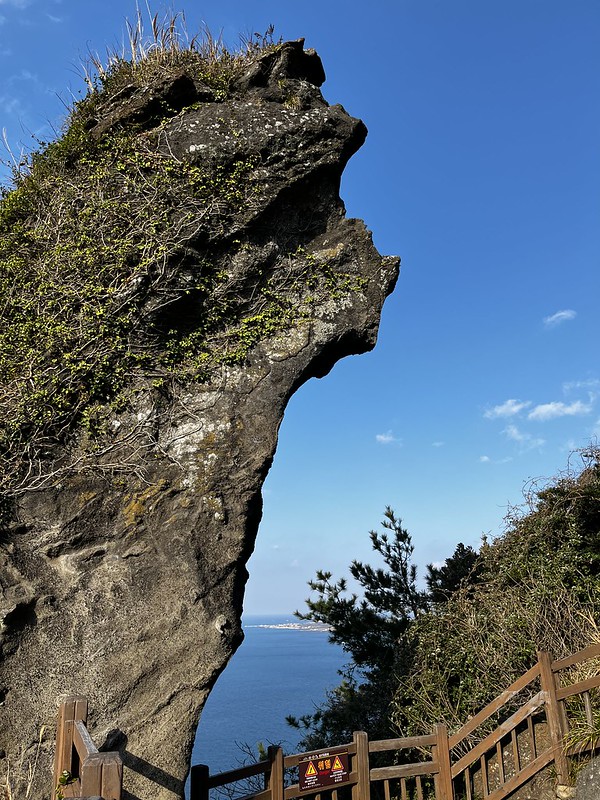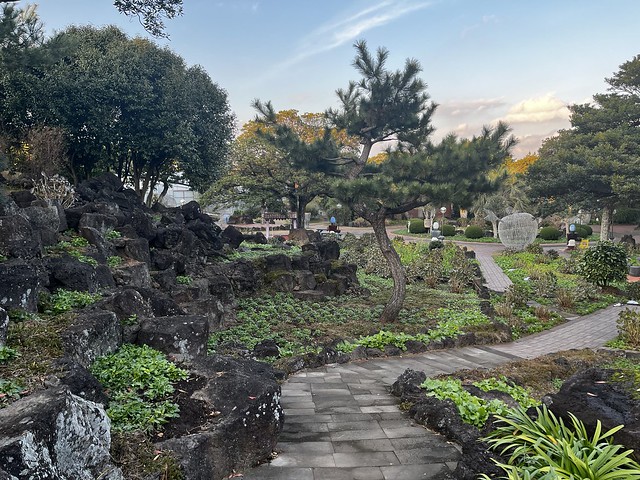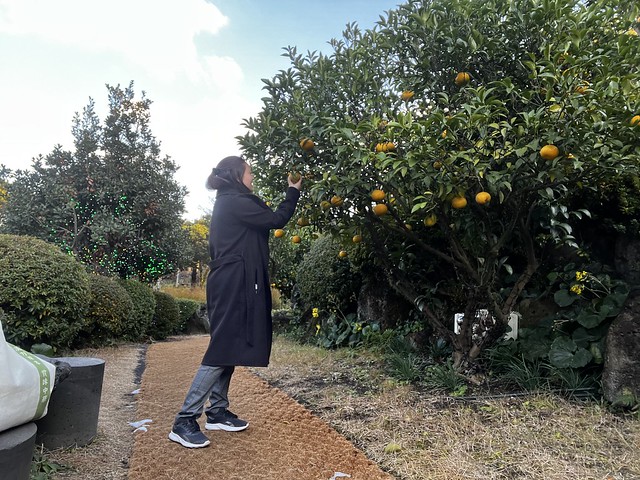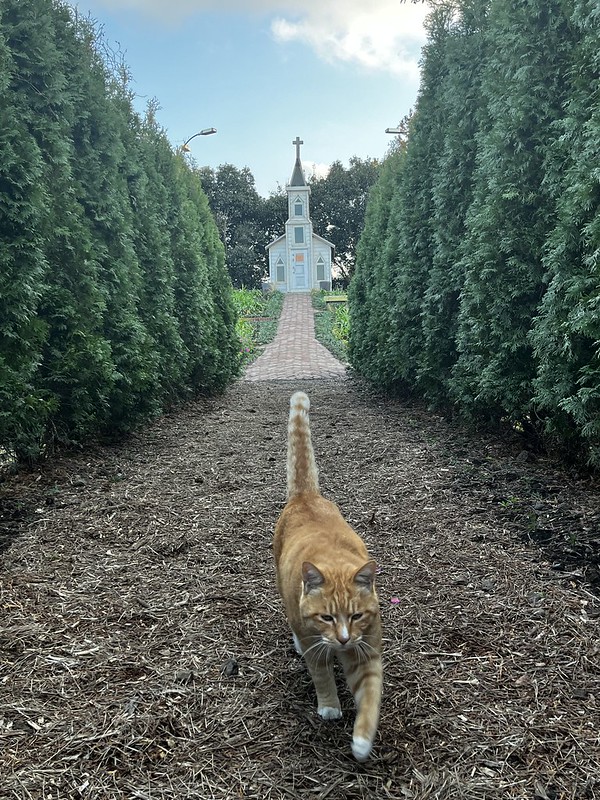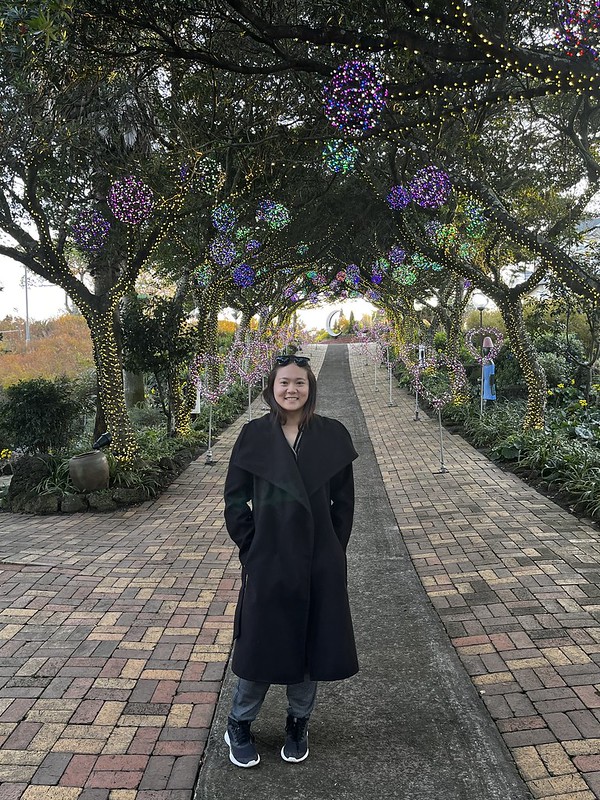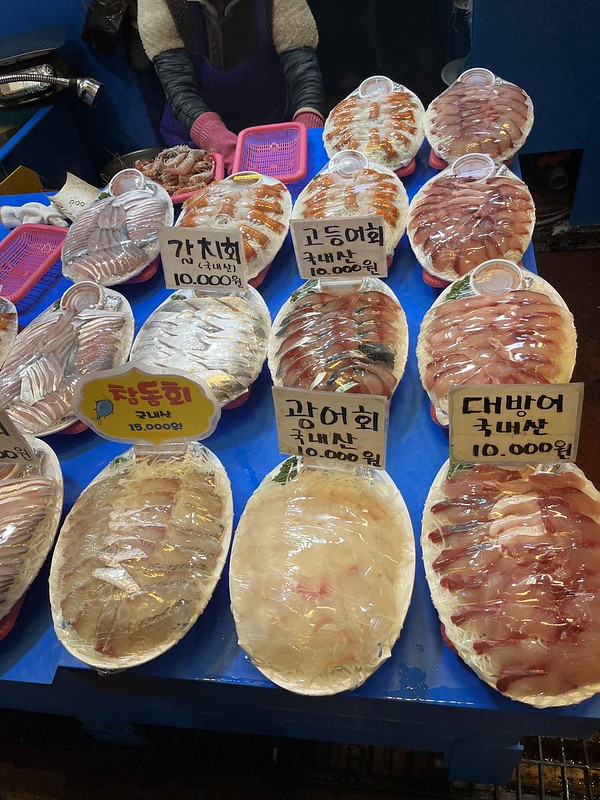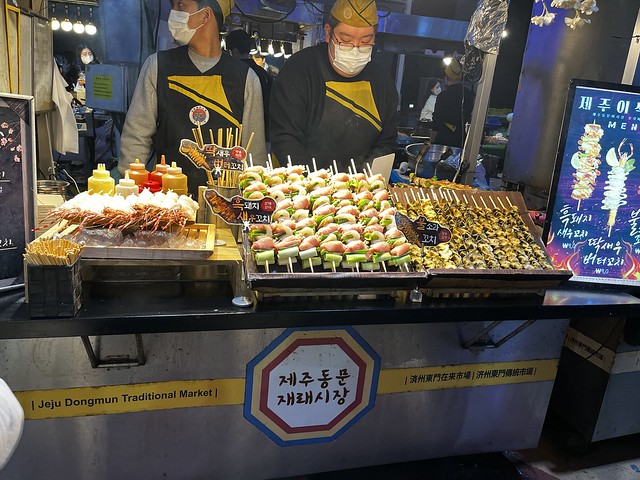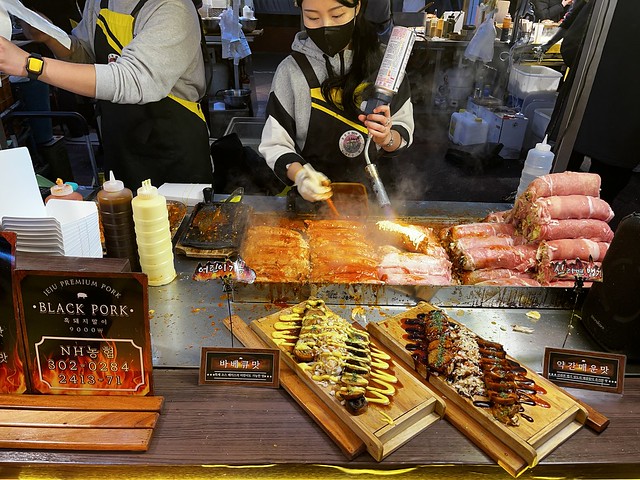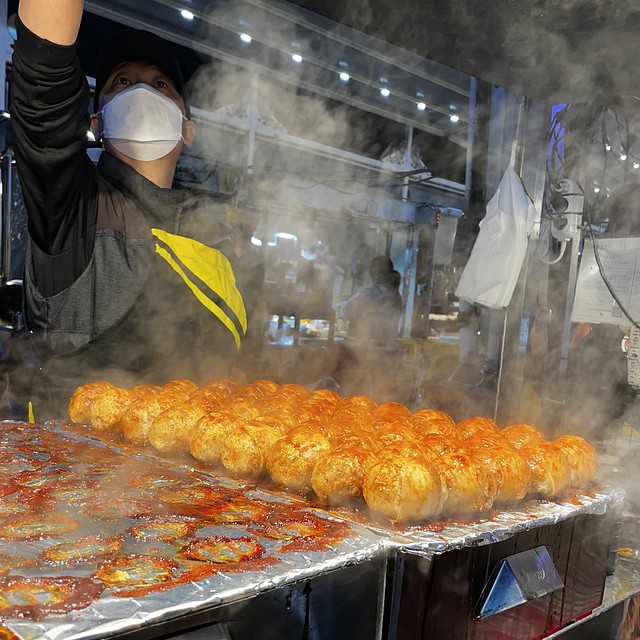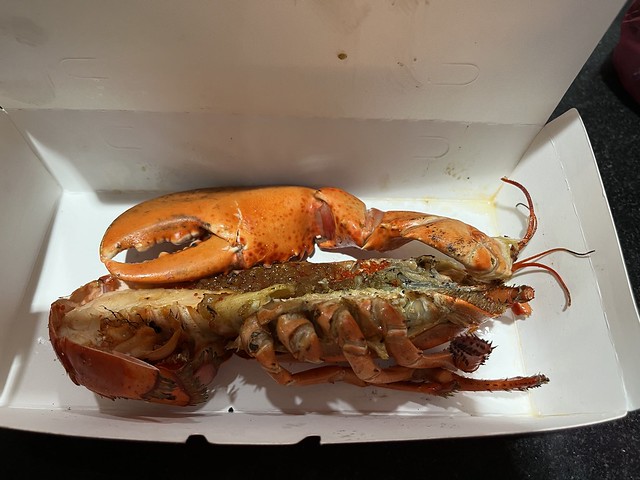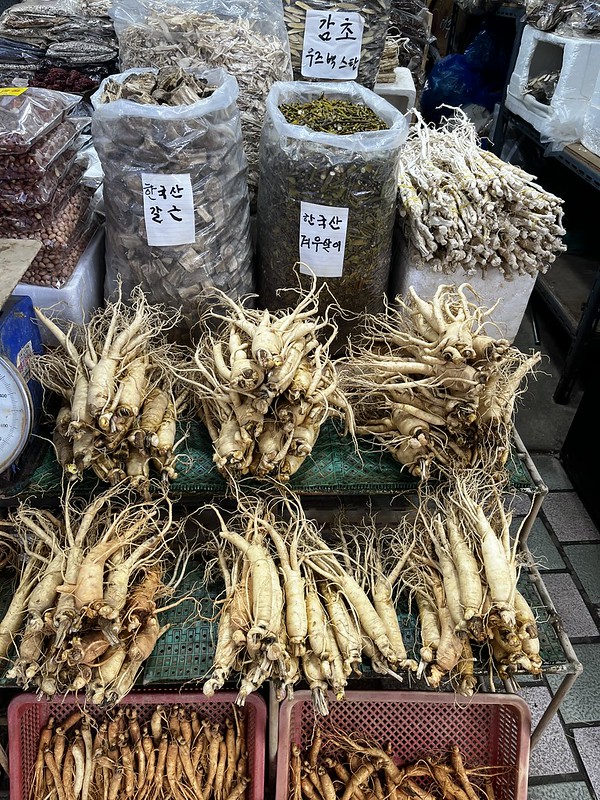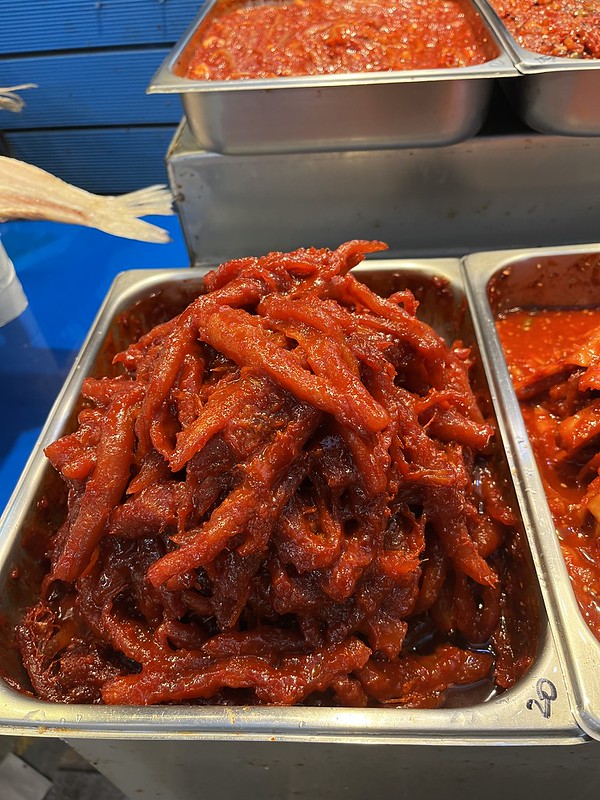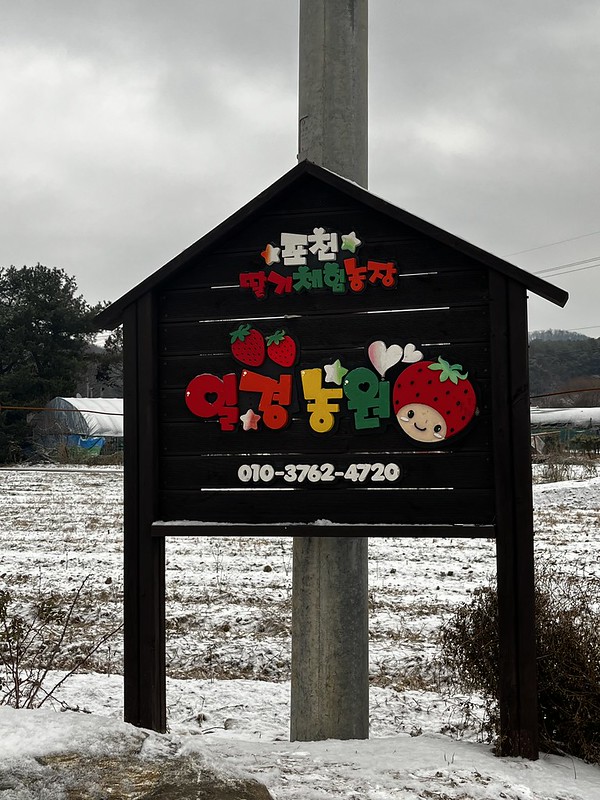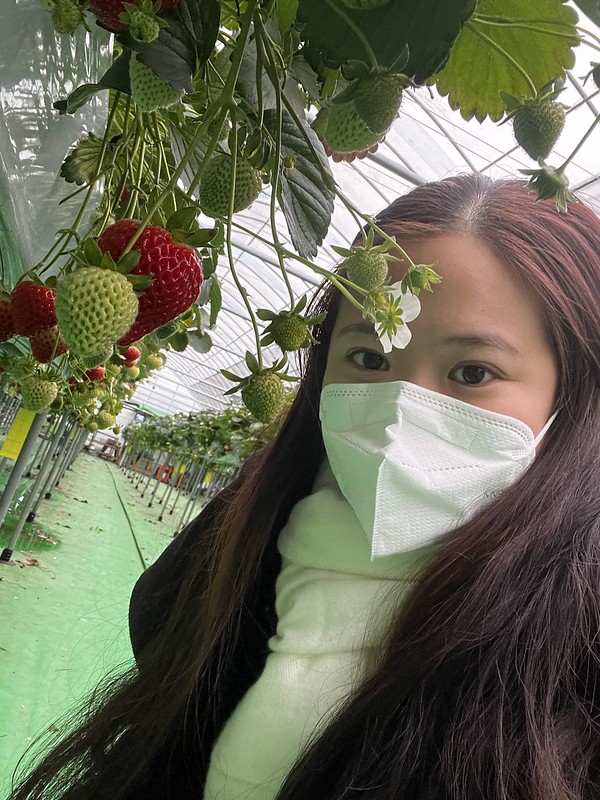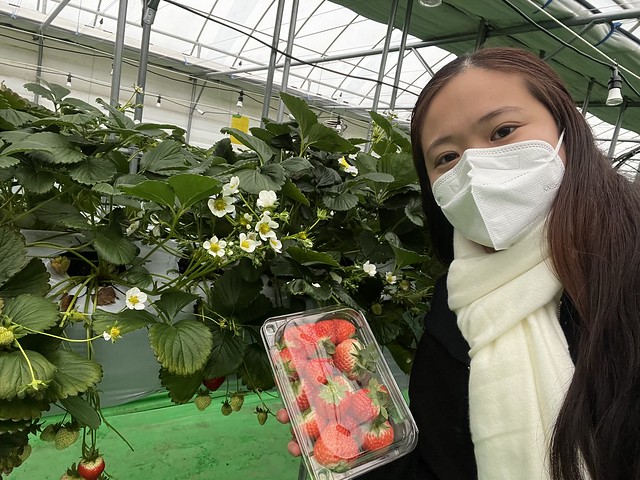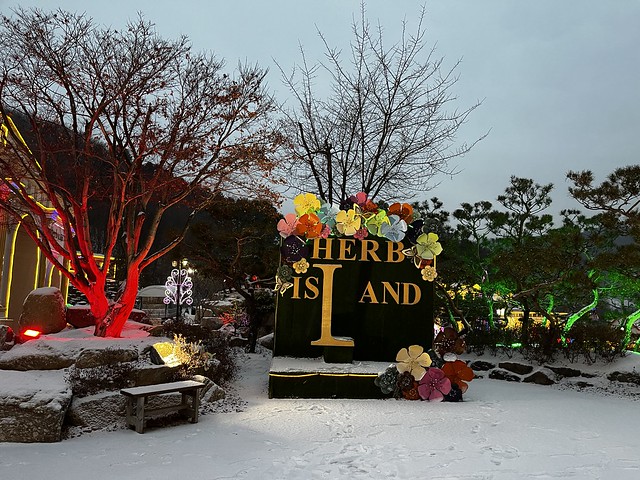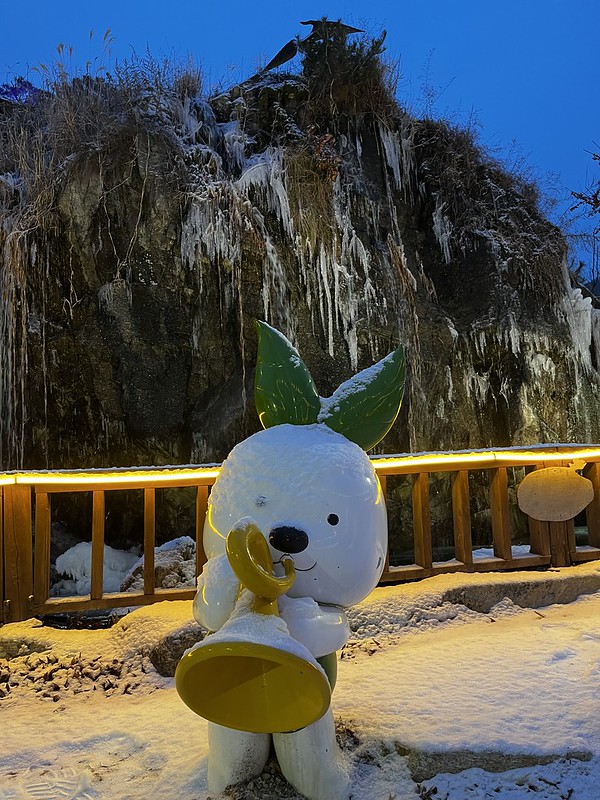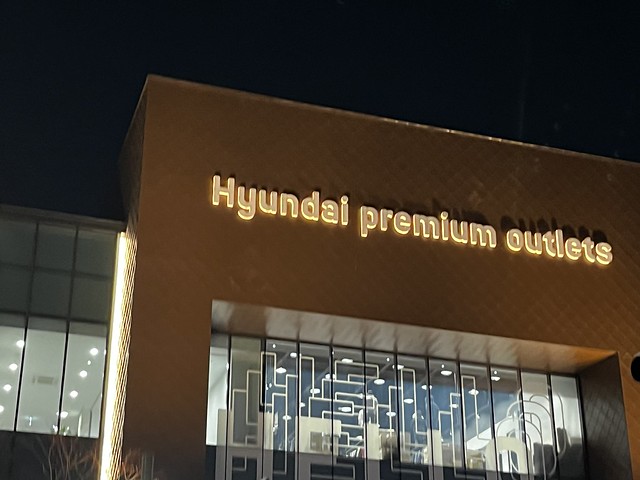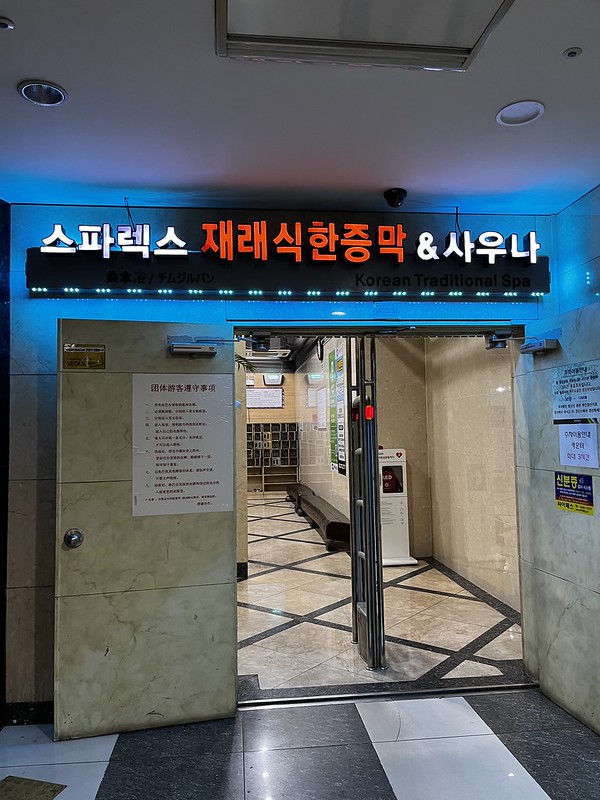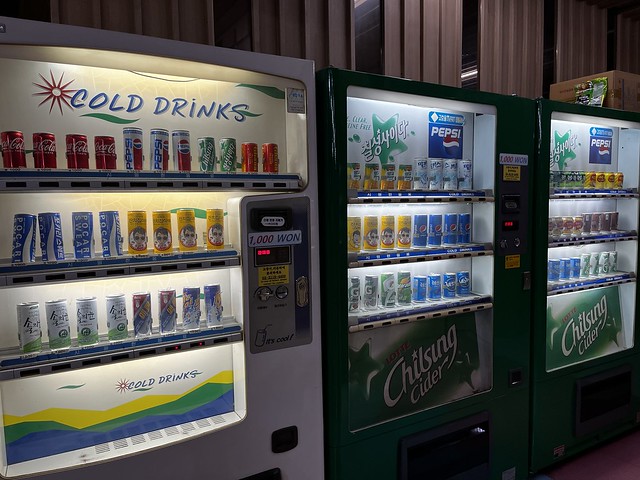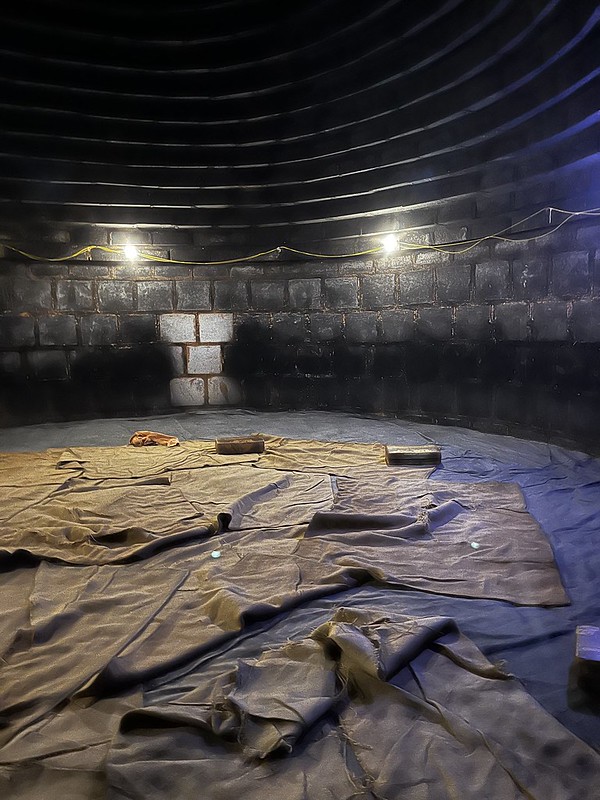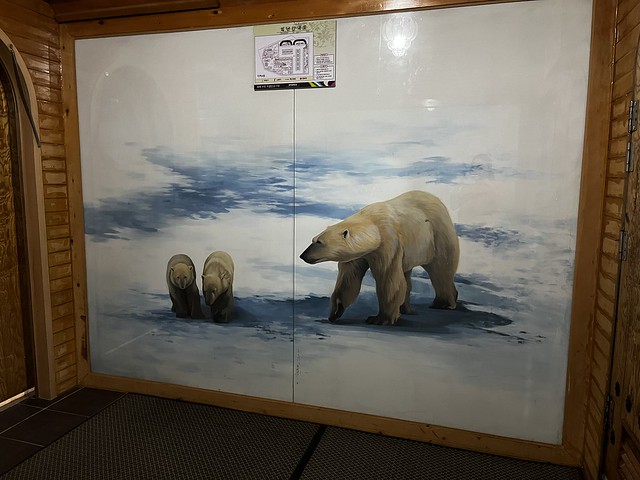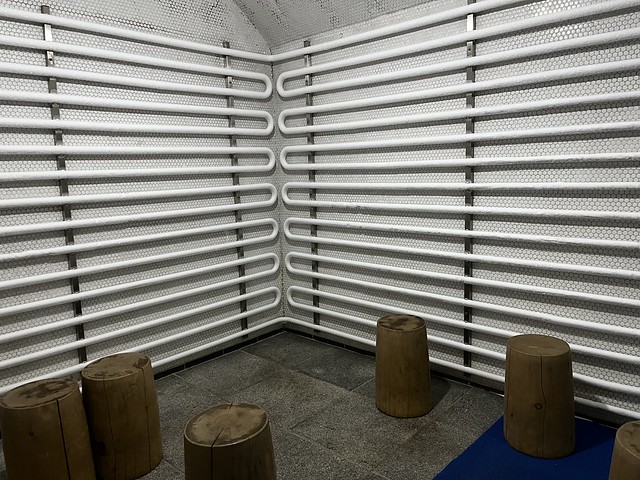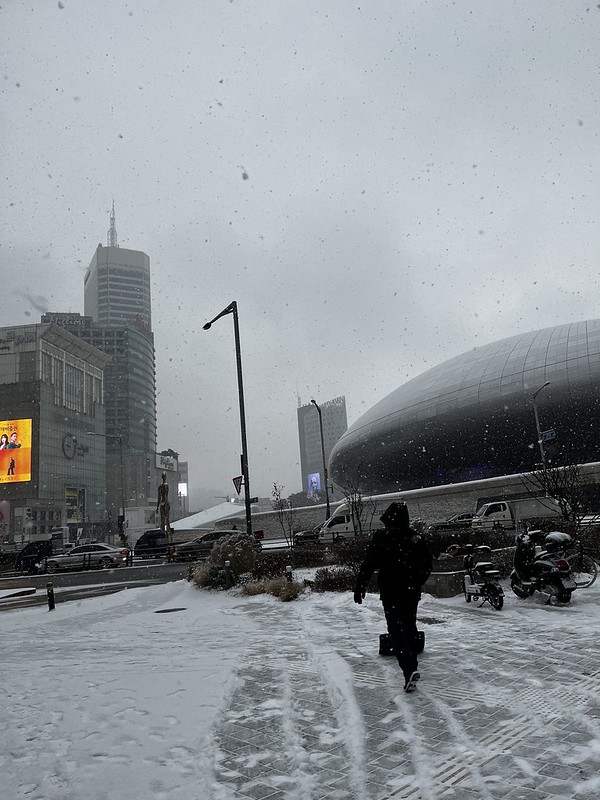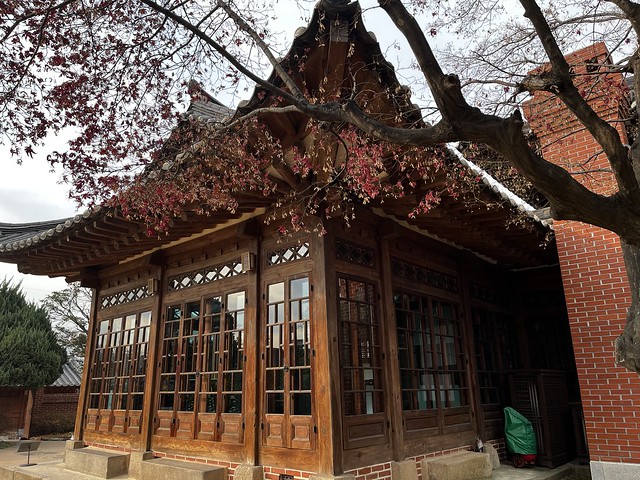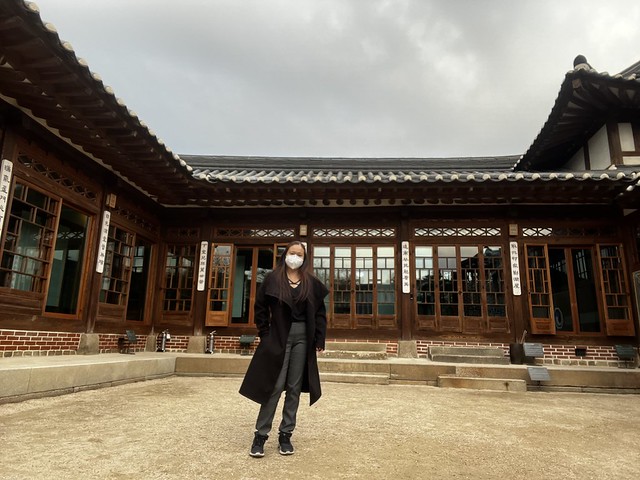O’Sulloc Museum (오설록) is known for its tea. As a tea lover myself, O’Sulloc was a ‘must-visit’ location, along with the nearby Seogwang (서광다원) tea plantation. Apparently, Jeju’s weather condition makes it the perfect place for growing tea, which requires somewhat acidic soil.
As part of the tour, we headed to O’Sulloc Museum (오설록) for lunch, where we had delicious green tea cakes and lattes. I guess, for most, cafés and lunches aren’t the same, but for me, it was perfect!
It was also during this time that I had a chance to speak to the Brazillians on my taxi tour as well. They were all cutely dressed in matching orange hats.
Afterward, we meandered around Innisfree, where I learned that stuff wasn’t cheaper than at the Innisfree stores in town or Olive Young. Before I left, I also made myself a little Innisfree postcard using their stamps.
Then, I had the chance to take some photos in the green tea plantation (서광다원), before rushing off to the O’Sulloc store to buy some souvenirs. I ended up buying a lot, since I knew I was leaving soon, and it was one thing I definitely wanted to buy that wasn’t available (to the same extent) in Toronto. When we returned to the taxi, we were quite late, as the line was really, really long. Whoops!
Unfortunately, our next destination (용머리해안) was closed and under scheduled renovation. I kinda wish we knew that earlier, especially since the itinerary still had it there. Instead, we went to a Sanbanggulsa Grotto (산방굴사). The Grotto is a UNESCO heritage site, and the top of Sanbangsan. Legend has it that this was the ‘tip’ of Hallasan, which was ripped off by the Hallasan gods when a hunter accidentally hit the god instead of whatever it was hunting.
Of course, geologically speaking, this mountain was actually a mountain of lava, which cooled as it hit the surface, but continued to flow within, creating a good amount of little caves.
Unfortunately, I thought the grotto it was quite small, and not worth the climb if you’re not interested in making offerings or praying to it. The view from half way up though, was pretty nice.
Since we were running low on time, we skipped Songaksan Mountain (송악산), I think, and went straight to Cheonjeyeon falls (천제연폭포). 천제연폭포 is known for being a 3 tiered waterfall.
Unfortunately, we didn’t have a lot of time at the falls, so I didn’t see the ‘main’ one (tier #3). I guess the driver was antsy to get back to the city.
Thus, we ended our tour and went back to our hotels/drop-off points. I dropped off my stuff at my hotel before heading off with my new travel buddy for dinner.
Overall: Nice and basic tour, with some flexibility and is more affordable than the rest of the tours. It provides the option of having lunch at O’Sulloc, which I liked, even though it really only has their cafe.
Some points:
First off, I should probably mention that the reviews on Tripadvisor… well, they weren’t amazing. I was fully expecting it to be cancelled the night before. Thus far, my luck had been holding out, and it continued to do for this tour. The tour on its own was actually decent – we had a driver drive us around, and we did the exploring on our own. The only thing I wished was that the driver (or more appropriately, the tour company) told which of the sites were actually open before the tour started/when booking, since I booked the original tour based on those advertised tour destinations, and there was no mention of what was actually open.
I wish they told us in advance that Hallim Park tickets need to be booked 40 min in advance if we wanted to use our credit card with discounts. Also, they had mentioned a discount if we went with them on the tour (and paid in cash), but we were not given any ‘discount’ whatsoever.
I have a feeling I wasn’t meant to message the driver the night before, although we were provided the phone number for communications, since he sent me the his entire itinerary from the company manager, including everyone’s phone numbers, pick up locations, costs he would be required to pay, how much he was to receive separately from us, etc. Hopefully it was just an accident, but it might be worth it to book with an alternate phone number instead of your day-to-day one for safety reasons.
We definitely skipped a stop completely, while we arrived at another one and was told it was actually closed due to construction/maintenance.

